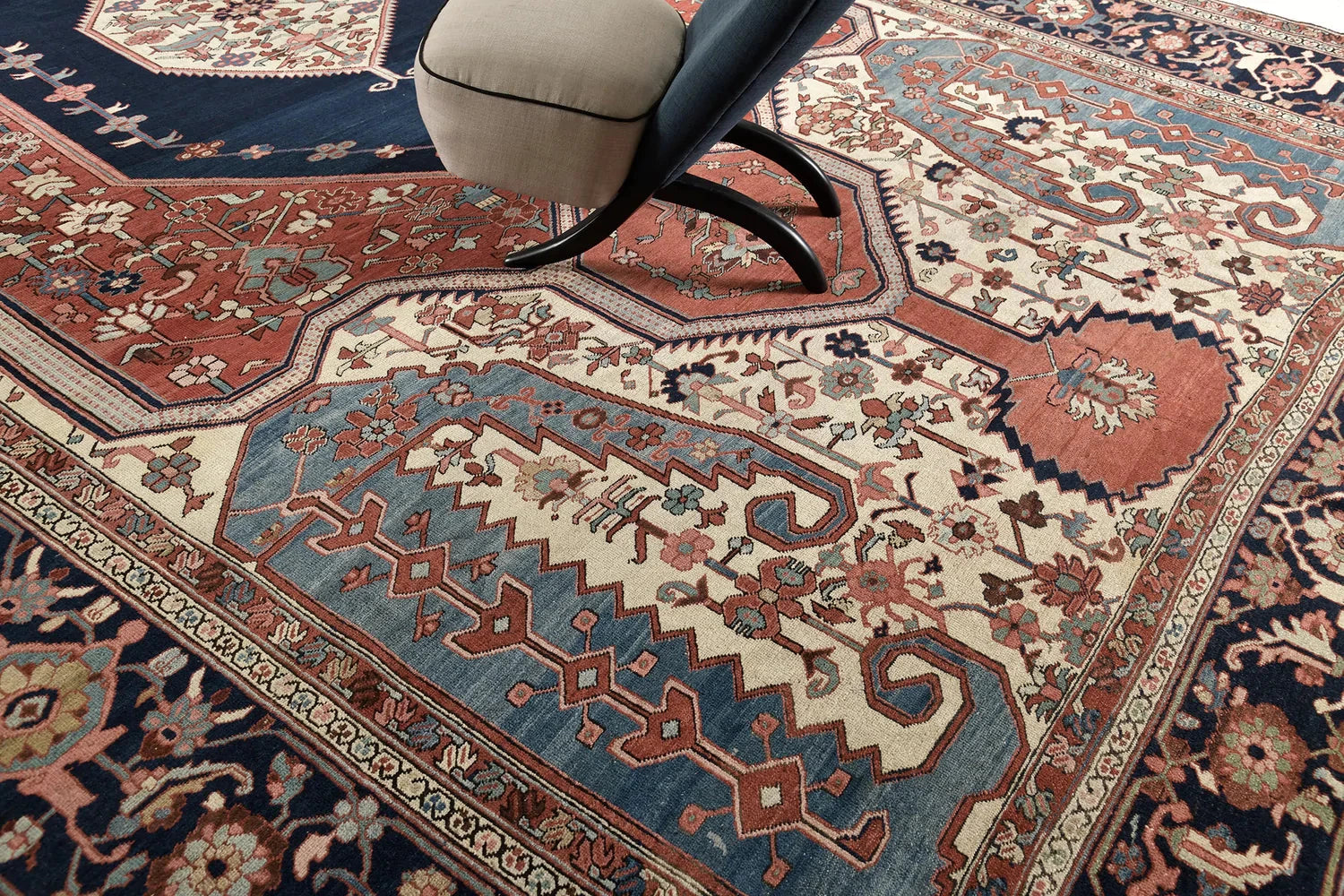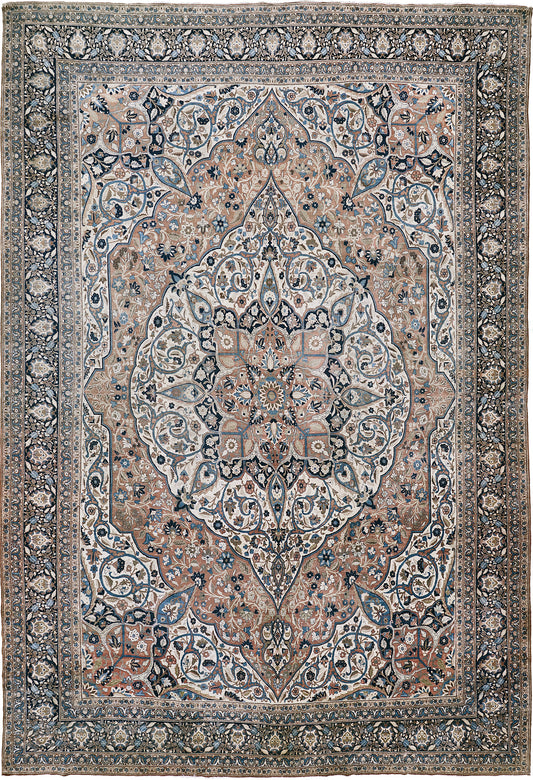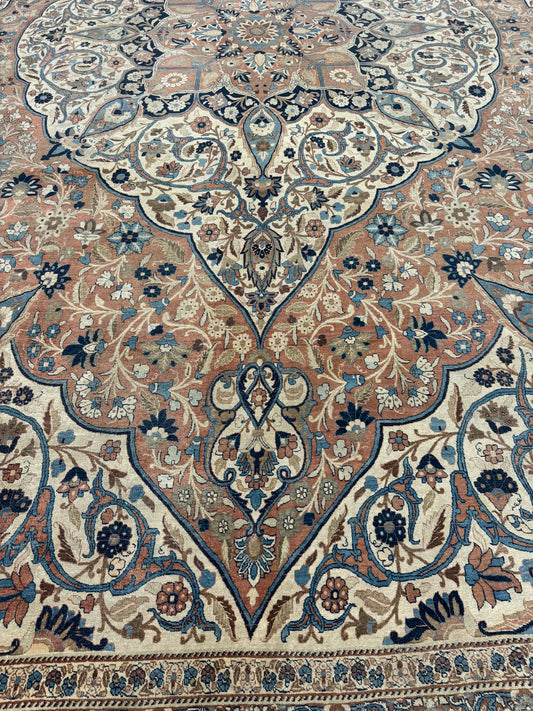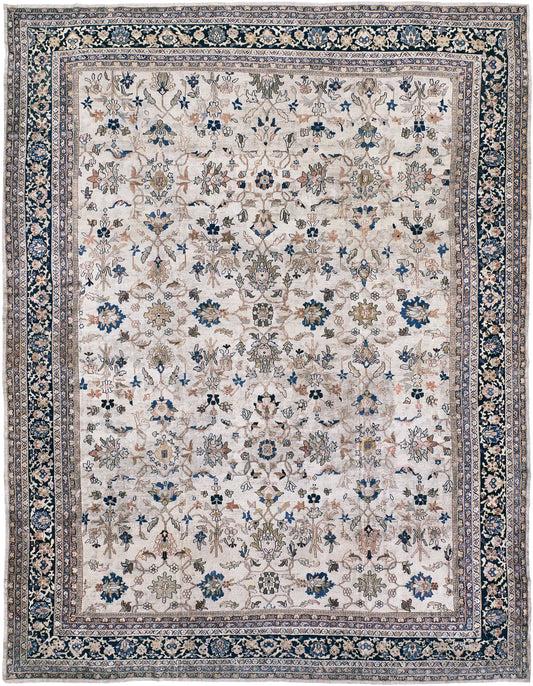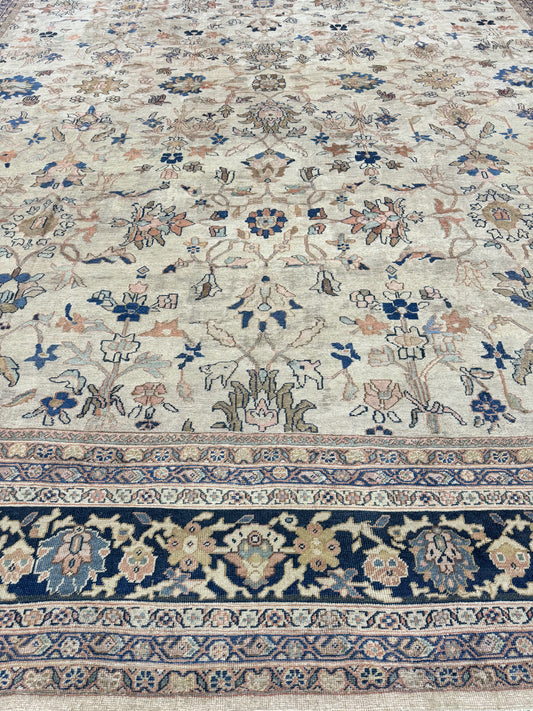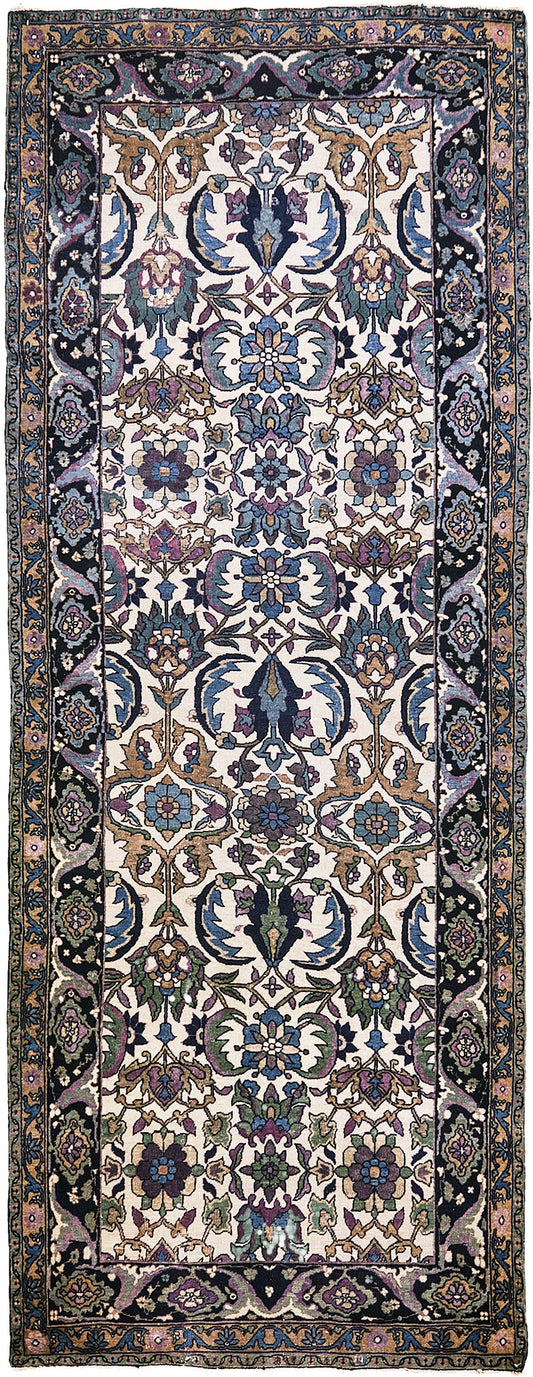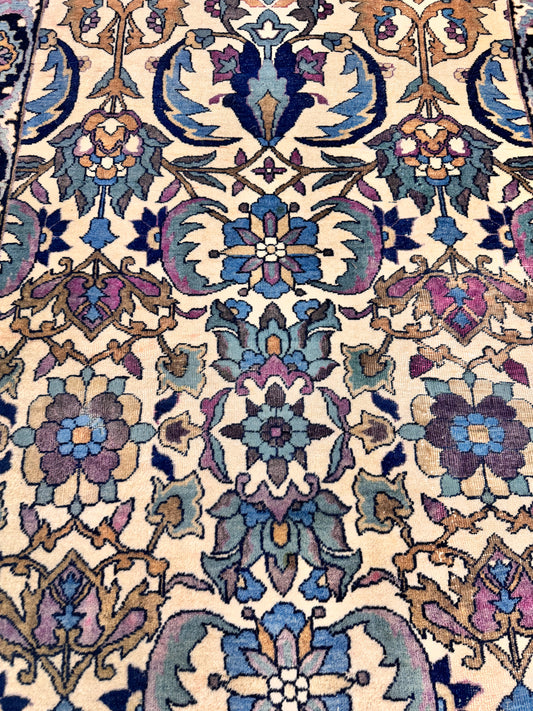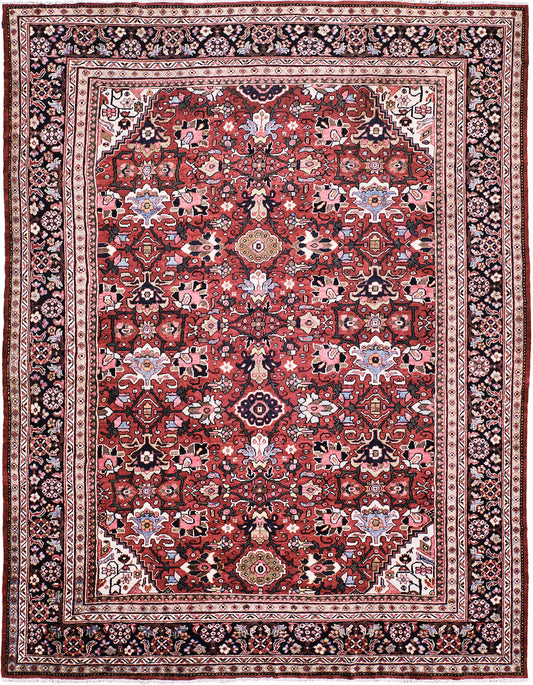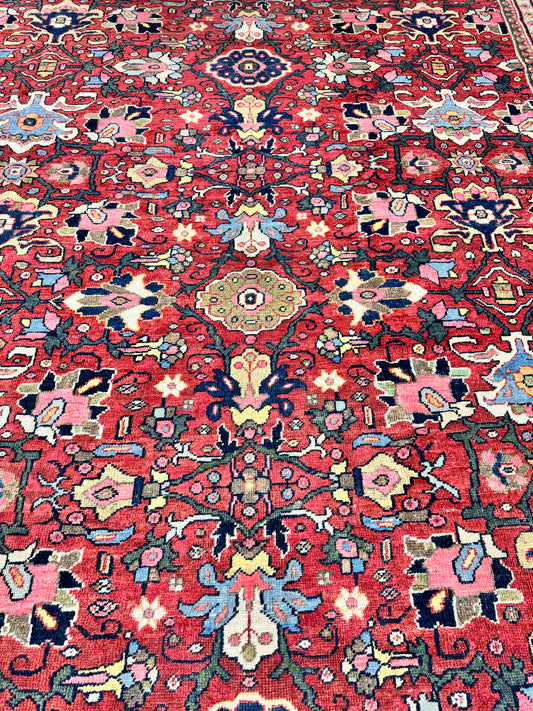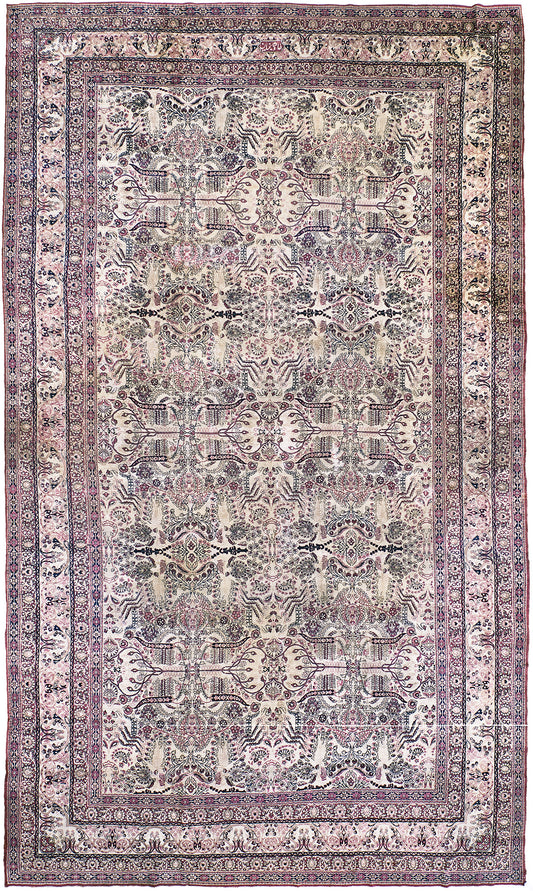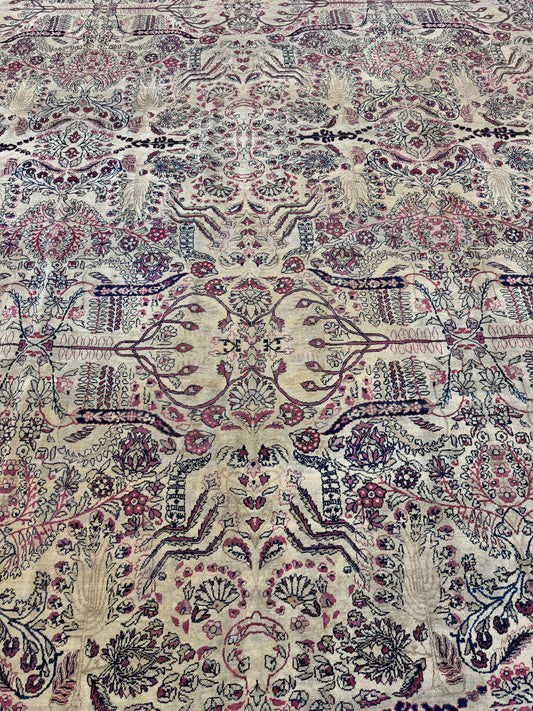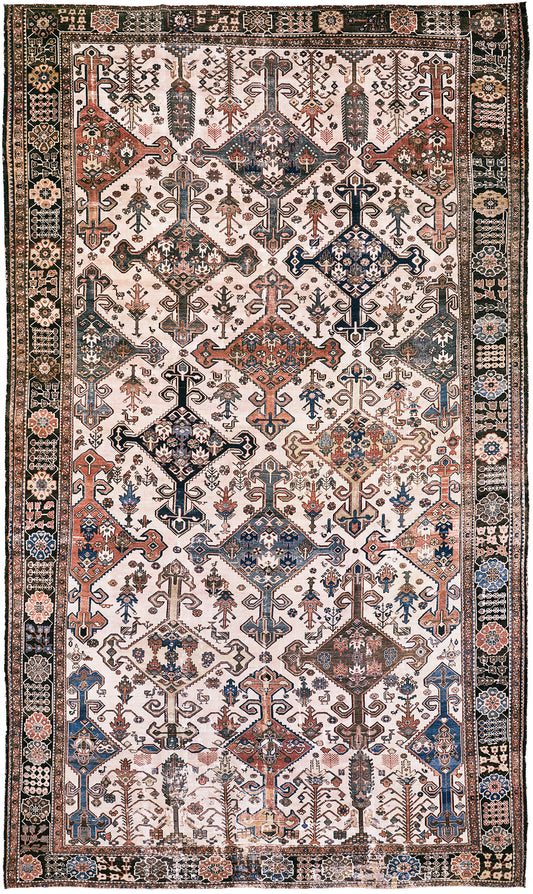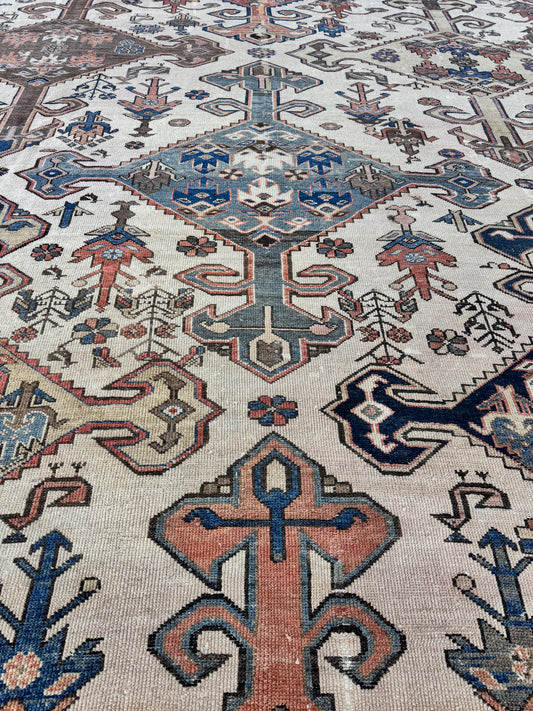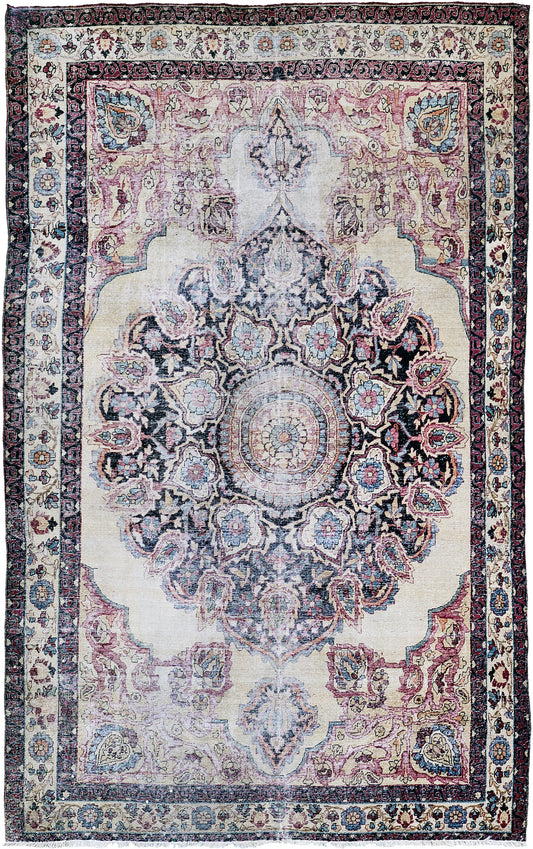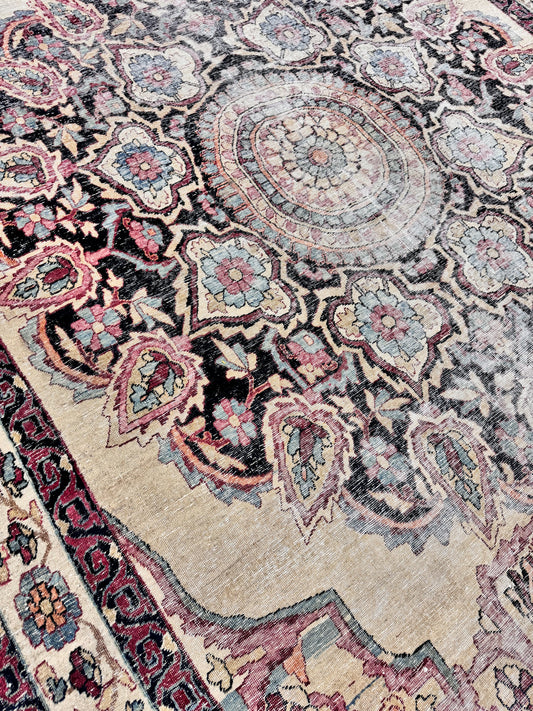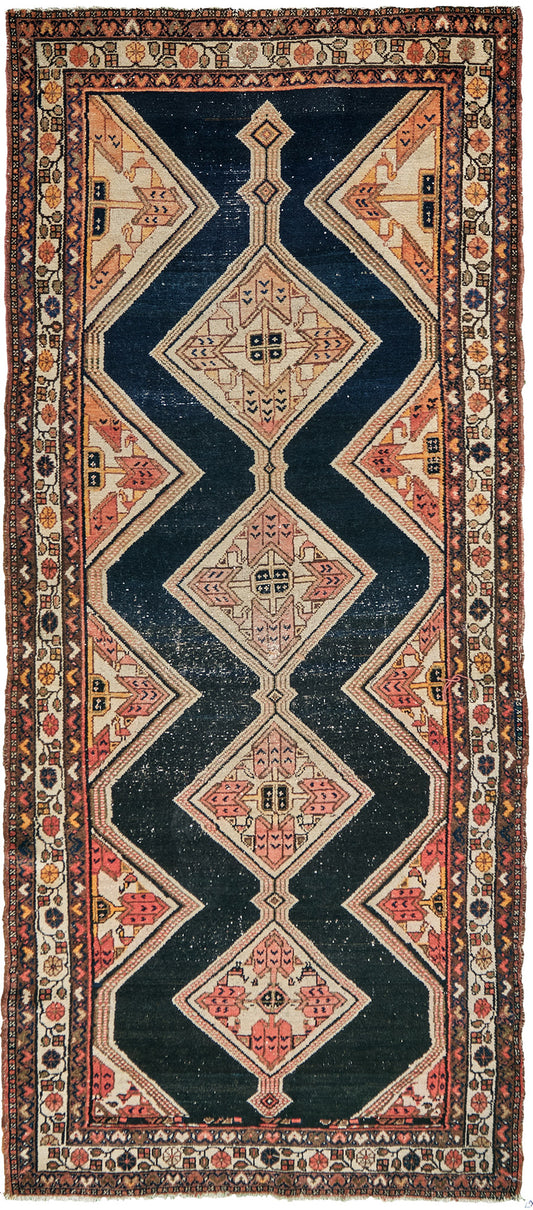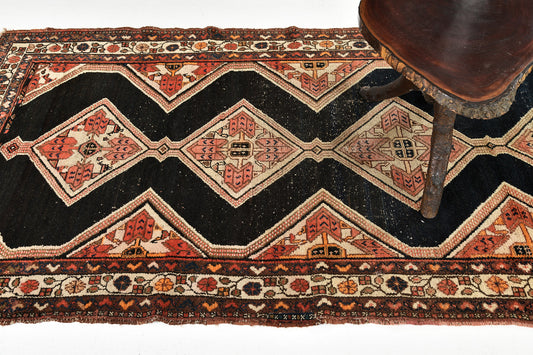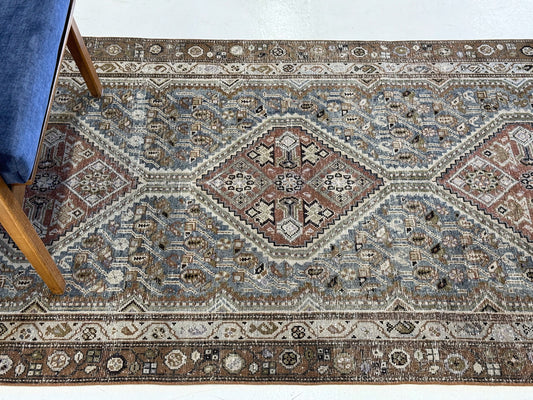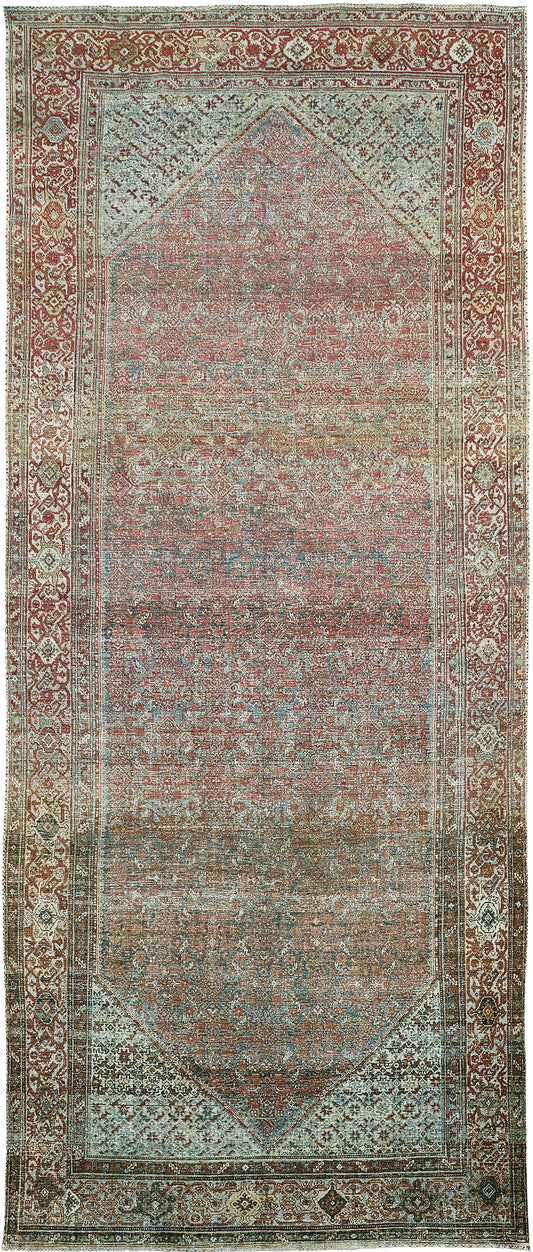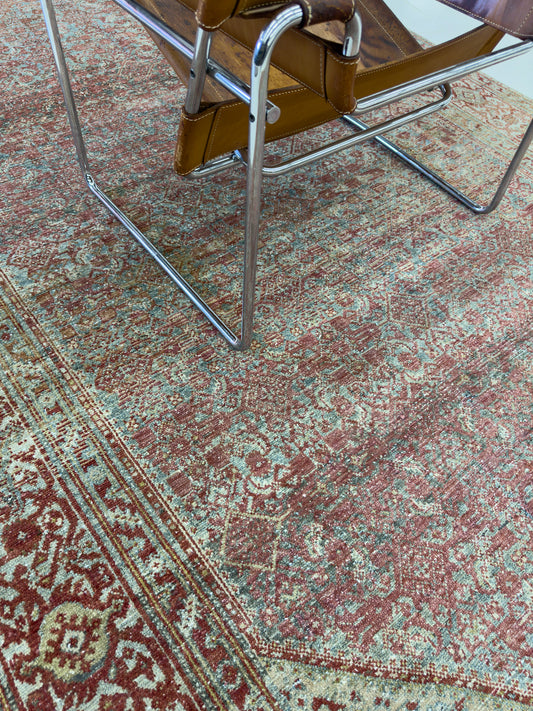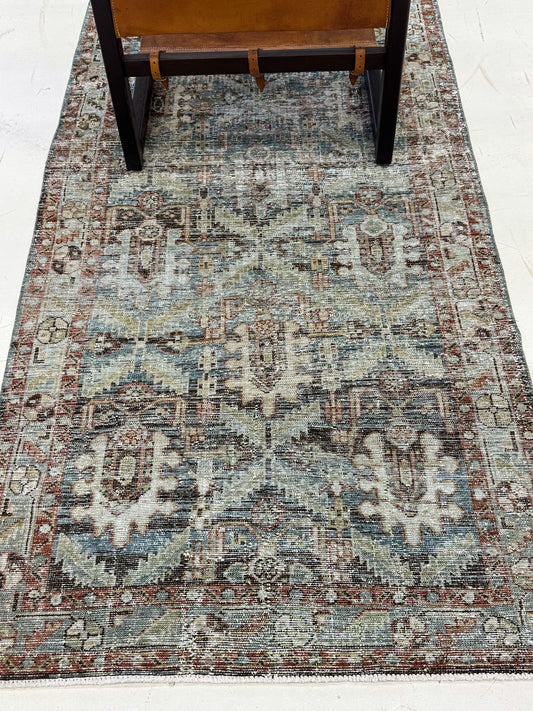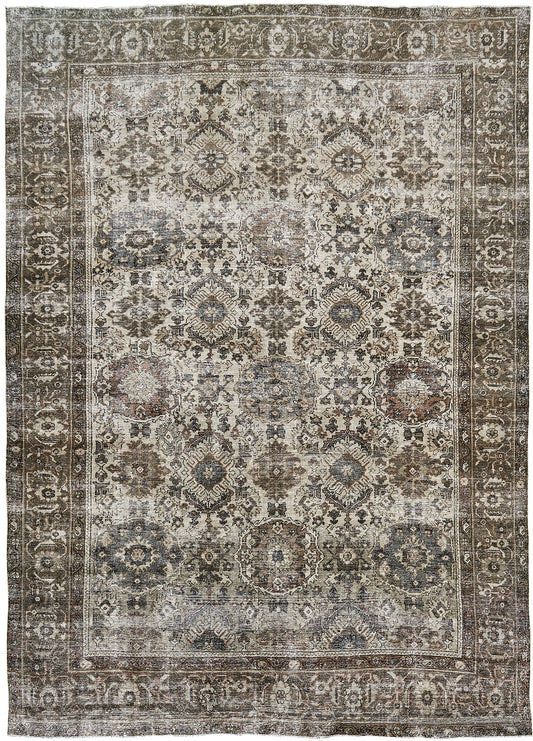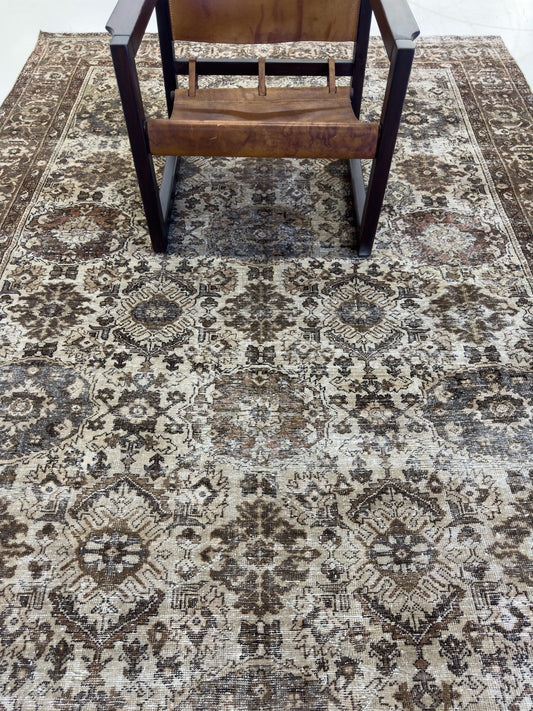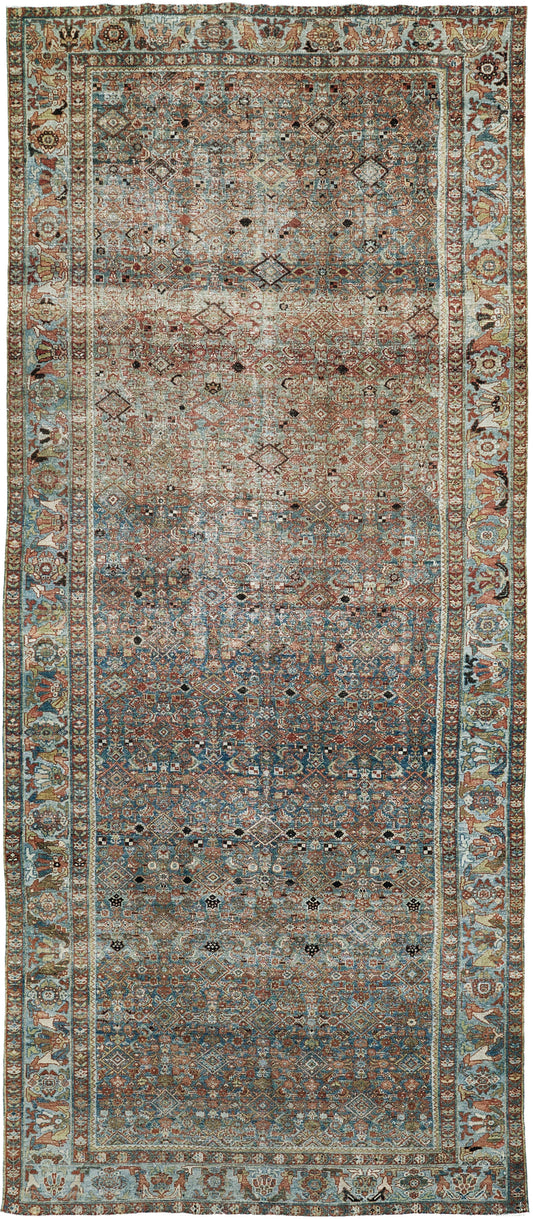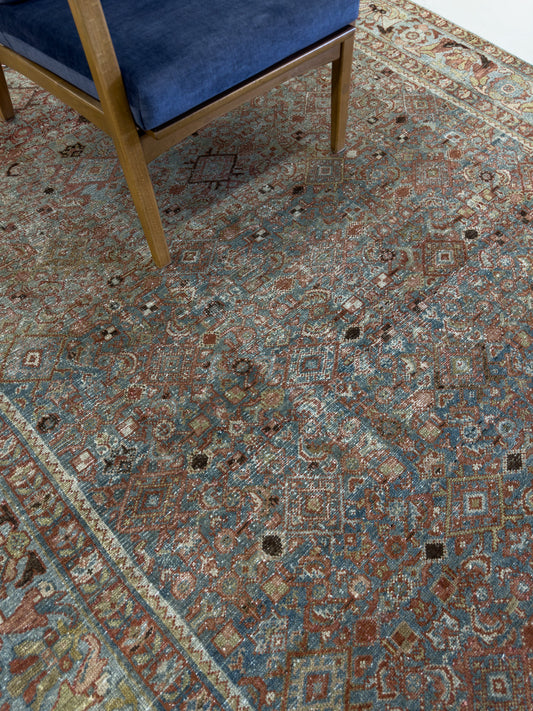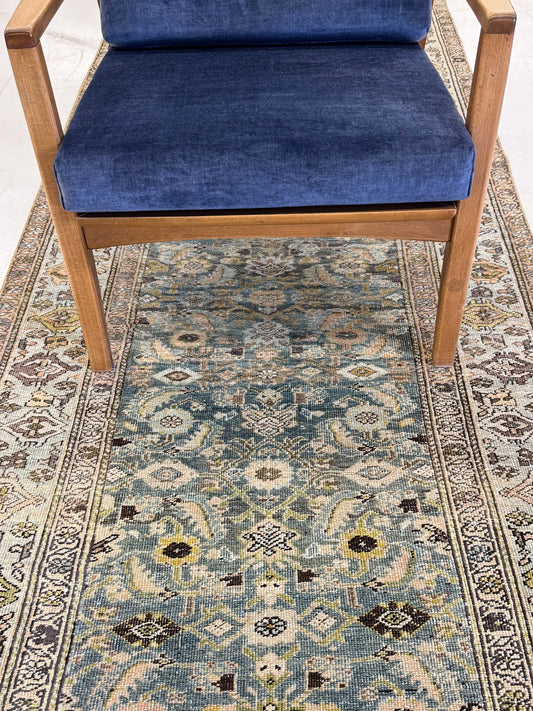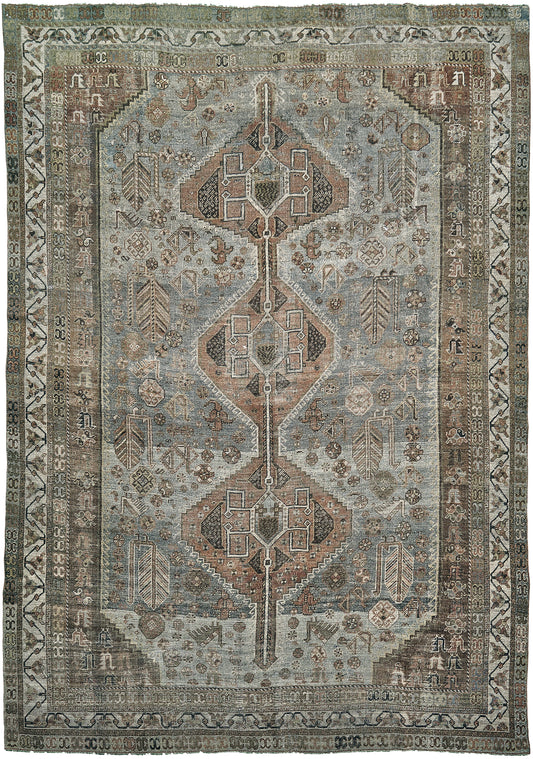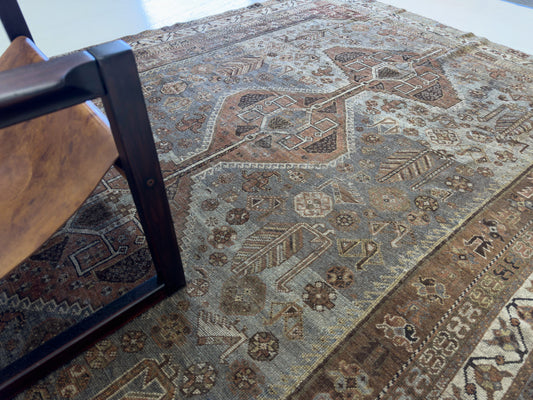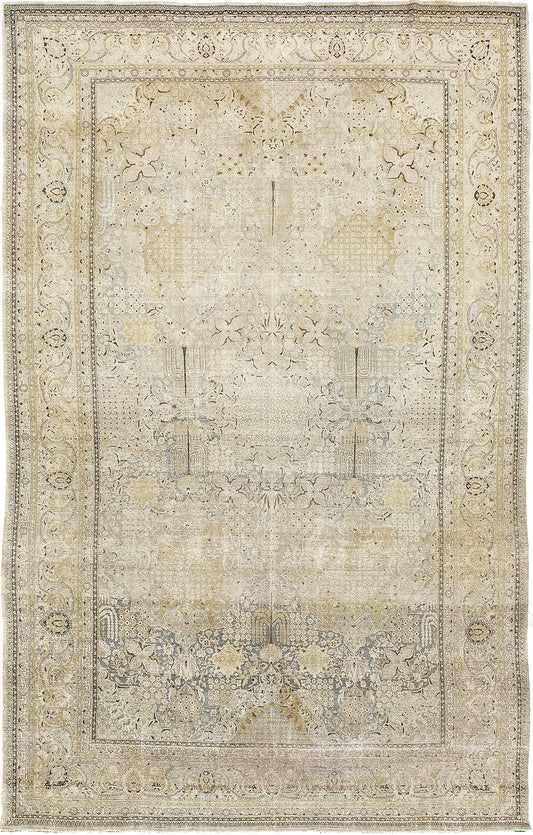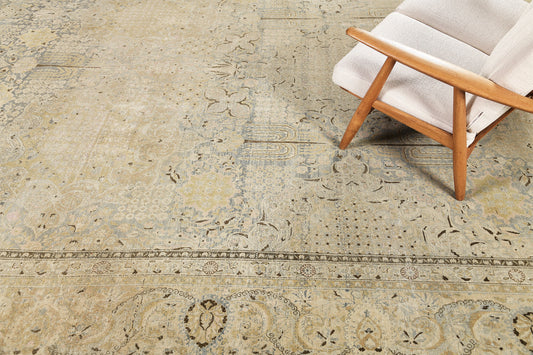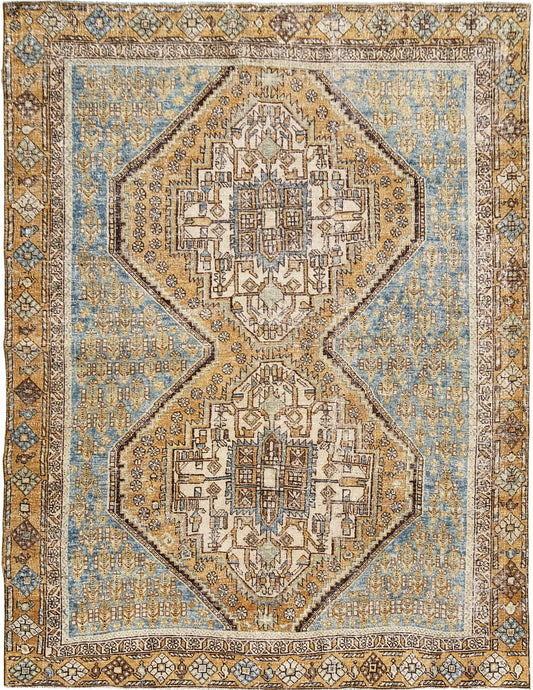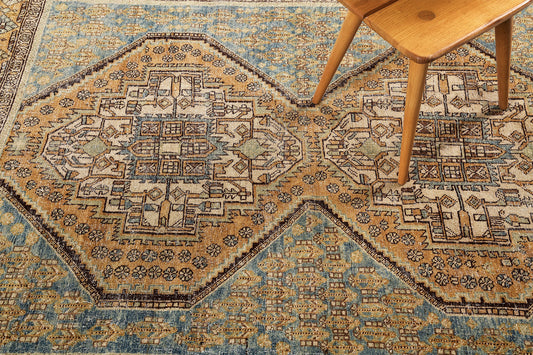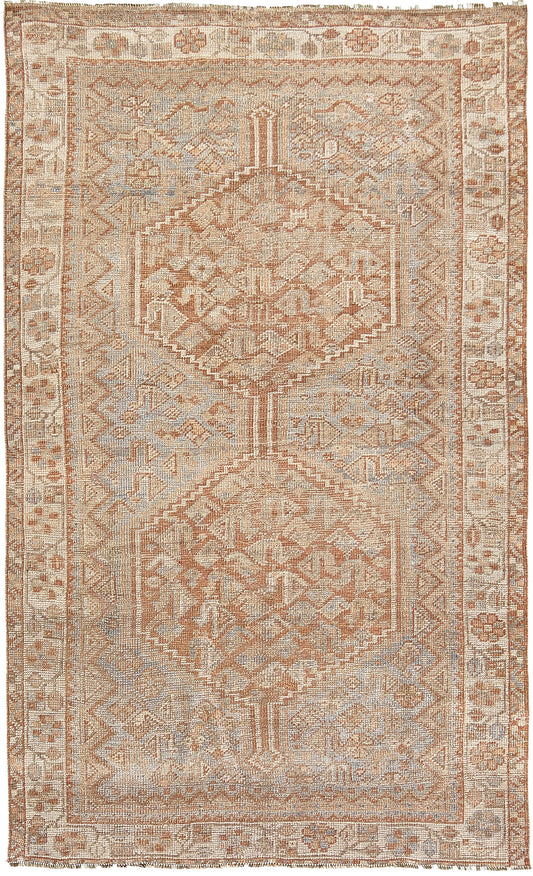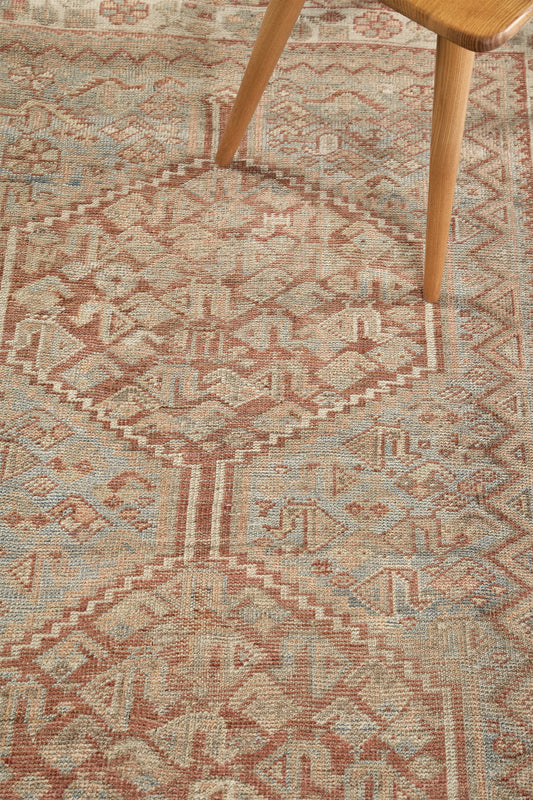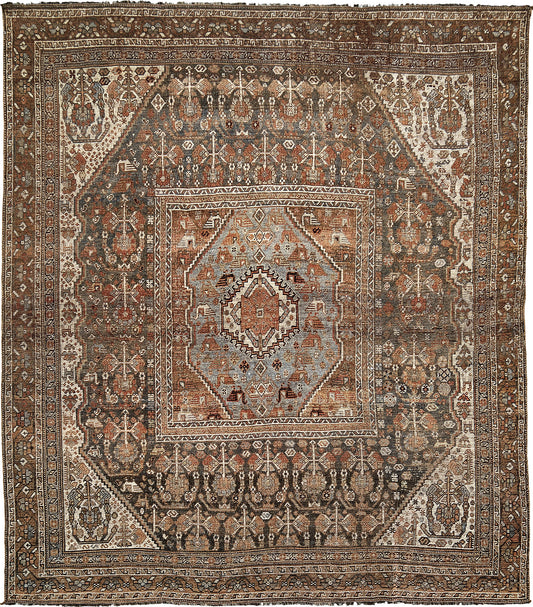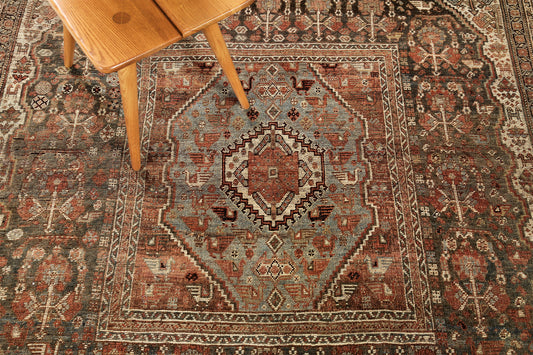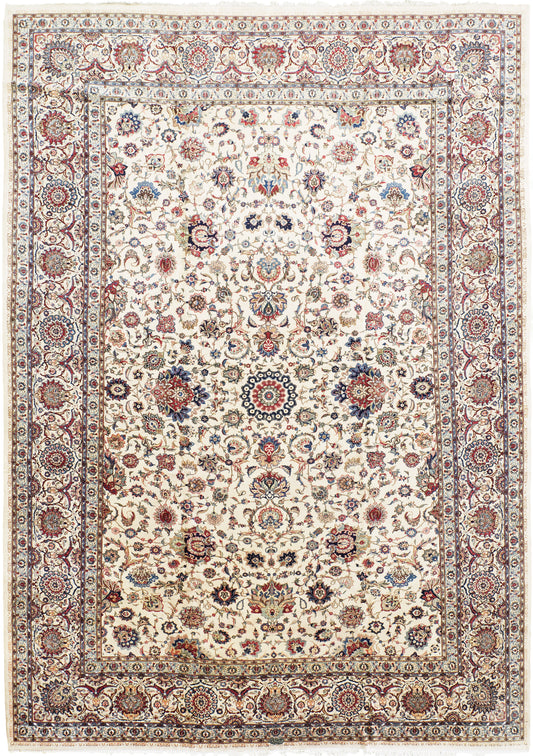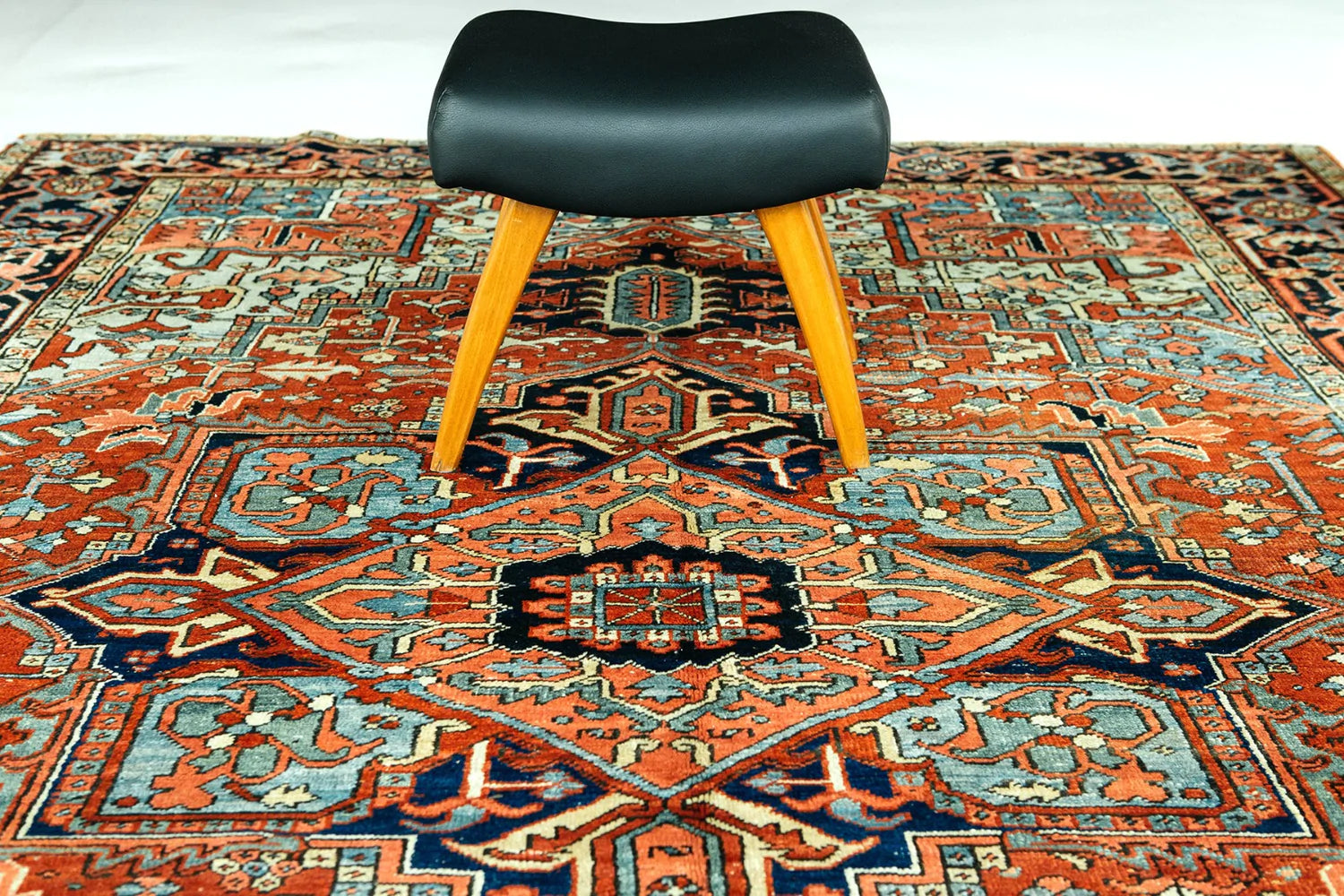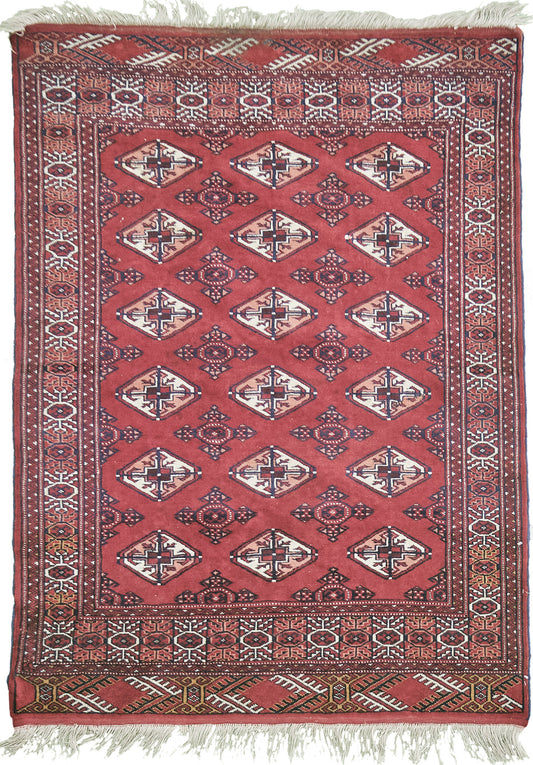-
Antique Persian Tehran Farahan Runner
Regular price $3,200.00 USDRegular price Sale price $3,200.00 USDUnit price per -
Antique Persian Mahal
Regular price $17,500.00 USDRegular price Sale price $17,500.00 USDUnit price per -
Antique Persian Kerman
Regular price $7,500.00 USDRegular price Sale price $7,500.00 USDUnit price per -
Antique Persian Malayer Runner
Regular price $3,200.00 USDRegular price Sale price $3,200.00 USDUnit price per -
Antique Persian Malayer Runner
Regular price $6,850.00 USDRegular price Sale price $6,850.00 USDUnit price per -
Antique Persian Malayer Runner
Regular price $13,800.00 USDRegular price Sale price $13,800.00 USDUnit price per -
Antique Persian Malayer Runner
Regular price $7,800.00 USDRegular price Sale price $7,800.00 USDUnit price per -
Antique Persian Sultanabad
Regular price $12,000.00 USDRegular price Sale price $12,000.00 USDUnit price per -
Antique Persian Malayer Runner
Regular price $14,800.00 USDRegular price Sale price $14,800.00 USDUnit price per -
Antique Persian Bidjar Runner
Regular price $8,500.00 USDRegular price Sale price $8,500.00 USDUnit price per -
Antique Persian Ghashgai
Regular price $6,800.00 USDRegular price Sale price $6,800.00 USDUnit price per -
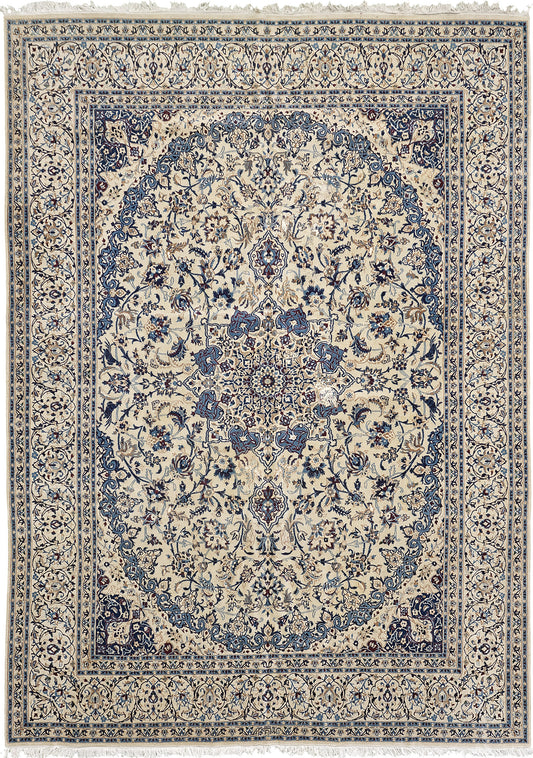 Sale
SalePersian Naien Rug
Regular price $1,500.00 USDRegular price $2,200.00 USD Sale price $1,500.00 USDUnit price perSale -
Antique Persian Afshar
Regular price $3,950.00 USDRegular price Sale price $3,950.00 USDUnit price per -
Antique Persian Afshar
Regular price $2,850.00 USDRegular price Sale price $2,850.00 USDUnit price per -
Antique Persian Afshar
Regular price $6,850.00 USDRegular price Sale price $6,850.00 USDUnit price per
Collapsible content
More About Persian Rugs
The beauty of Persian rugs: why they continue to be an interior design staple
Persian rugs have a rich and complex history that is intrinsically linked to the culture and customs of the regions of Iran and surrounding countries. For centuries, these hand-crafted rugs have been used to add beauty and elegance to homes all over the world. Typically made from wool or silk, these rugs feature intricate patterns and designs that reflect Persian culture and heritage. The history of Persian rugs is a fascinating story that is steeped in tradition and trade and dates back to the 6th century BCE. In Persia, rugs were often used as currency, and they were exchanged as gifts between rulers. The popularity of these oriental rugs continued to grow, and by the 19th century, they were being exported to Europe and America and coveted by royalty and nobility all over the world. Today, Persian rugs are still highly prized works of art.
Handmade Rugs
A Persian carpet is traditionally handwoven by highly skilled artisans, a process that can take months or years to complete. First, the weaver prepares a loom with the warp, the foundation into which the rug will be woven. Then, the weaver knots each individual strand of wool or silk onto the warp. There are many variations in warp and knot structures used around the world. The motifs of a rug vary significantly across geography and time, and can be key in identifying a rug’s provenance using a variety of traditional patterns and colors. As the rug starts to take shape, the weaver adds additional details, such as a central medallion and floral-shaped motifs known as Guls or Gols. Once the rug knotting is finished, the rug is removed from the loom, edges are bound, and the rug is washed and stretched. In commercialized productions, the rug undergoes a series of quality control tests to ensure that it meets the highest standards.Persian rugs are made by a wide variety of methods, from the most traditional hand-knotting technique to more modern power-loomed methods. The quality of a Persian rug is determined not only by the materials used, but also the fineness of weave, and the skill of the artisans who creates it. Rugs made with hand-spun wool and natural dyes will typically be of higher quality than those made with synthetic materials. As a result, Persian rugs can vary widely in price and quality.
Preparing the fibers
One of the secrets to the longevity of fine Persian rugs is the care that goes into preparing the fibers before they are woven. The process begins by sorting the fibers according to color and quality. The best fibers are set aside for the rug's pile, while the others are used for the foundation and backing. The next step is to wash the fibers, which helps to remove any impurities and make them more pliable. Once they are clean, the fibers are ready to be dyed. This is done using a variety of natural dyes, which give Persian rugs their characteristic rich hues. With the fibers dyed and sorted, the weaver can finally begin to create a work of art that will be enjoyed for generations to come.Traditional dyes used on Persian Rugs
Rugs from Iran are renowned for their intricate designs, their high quality and vibrant and beautiful colors. Often made with natural dyes, their colors range from soft earth tones to rich jewel tones. Weavers have been using natural dyes for centuries, and the traditional dyeing process is an integral part of Persian rug making. Common natural dyes used are madder root, walnut hulls and indigo, to create the treasured Blue Persian Rugs . Madder root typically produces shades of red, while indigo creates blues and greens. Walnut hulls produce a dark brown color that is often used to create contrast.To dye the fibers for these exquisite rugs, the artisans must follow a painstaking process that has been passed down through generations. First, the wool, silk or cotton is soaked in a vat of lime water. This prepares the fibers for dyeing and also helps to set the colors. Next, the fabric is dipped into the dye bath. The fibers are then placed in the sun to dry, before being washed in fresh water. This final step helps to ensure that the colors will not bleed or fade over time. Thanks to this labor-intensive process, Persian rugs are prized for their beauty, durability, and craftsmanship and last for decades with proper care. In addition, the tight weave helps to protect against wear and tear, while the dense pile helps to resist dirt and stains.
Persian rugs are a beautiful and luxurious addition to any home. Not only do they add a touch of elegance and sophistication, but they are also a great investment as their value tends to appreciate over time.
Discover our Curated Collection of Green Persian Rugs and Red Persian Rugs
Persian Rug Styles
Our collections curate the most sought after trends, styles and colors of handmade Persian Rugs.
Hailing from the vibrant city of Tabriz in the East Azerbaijan province of Iran , these rugs epitomize luxury and sophistication. Crafted with meticulous care, Tabriz rugs feature high-quality wool or a blend of wool and silk, with a lustrous silk or cotton foundation. Their designs range from captivating hunting scenes to intricate medallions, found in museum-worthy antique pieces that are treasured around the world.
Mehraban’s Antique Persian Tabriz
The captivating Antique Persian Tabriz Rug is a true treasure that exudes elegance and grace. Crafted with meticulous care and precision, this rug showcases the renowned Tabriz design, known for its intricate patterns and exquisite craftsmanship. Made from high-quality wool, it boasts a plush pile weave that offers a luxurious texture underfoot.
Originating from Iran, the birthplace of Persian rug artistry, this antique masterpiece carries a rich history and cultural significance. Its age lends a sense of authenticity, making it a true collector's item for rug enthusiasts and connoisseurs.
Collapsible content
Learn more about our Persian Rug Styles
Heriz Rugs
With their distinctive bold patterns and vibrant colors, Heriz rugs make a striking statement. The centerpiece of a Heriz rug is a large medallion surrounded by intricately designed corners. Known for their durability, these rugs are crafted to withstand the test of time while infusing any space with warmth and character.
Kashan Rugs
These rugs are renowned for their elegant floral motifs and captivating color palettes. A signature feature of Kashan rugs is their patterned floral field, embellished with a medallion and unique corner designs. Ivory, rich red, and deep blue dominate the color scheme, complemented by occasional bursts of green, yellow, or burnt orange, creating a harmonious visual symphony.
Gabbeh Rugs
In the Zagros Mountains, Gabbeh rugs are woven by skilled Luri and Qashqai weavers. Reflecting a heavy tribal influence, these rugs are characterized by their thick and coarse texture, crafted using handspun wool. Simple yet captivating, Gabbeh rugs feature minimalistic designs on a plush, solid-colored field, radiating warmth through hues of yellow, red, orange, or rust, all derived from natural dyes.
Isfahan Rugs
These masterpieces are meticulously woven using high-quality wool on a foundation of silk or cotton. With a higher knot count and dense construction, Isfahan rugs exude unparalleled luxury. Their symmetrical and balanced designs often showcase a single medallion in shades of rose, blue, or indigo, set against an ivory backdrop and adorned with delicate vine motifs.
Nain Rugs
Nain Rugs are famous for their exquisite texture and meticulous craftsmanship. These rugs feature the finest wool and boast an impressive knot count ranging from 300 to 700 knots per square inch. Delicate and intricately patterned, Nain rugs often showcase branches of green or blue intertwined with small flowers on a light ivory or white background, creating a serene and elegant ambiance.
Mehraban’s Extra Fine Persian Nain 6 ply
The extraordinary Extra Fine Persian Nain 6 ply Rug is a true masterpiece that embodies luxury and sophistication. This rug is the epitome of refinement, elevating any space with its exquisite presence.
Impeccably crafted with meticulous attention to detail, this rug showcases the iconic Nain design, known for its intricate floral patterns and timeless elegance. The combination of wool and silk creates a lustrous texture, adding a touch of opulence to the overall aesthetic.
Despite its new age, it honors the rich heritage and techniques of the finest Persian rugs, ensuring its place among the most prized possessions of discerning collectors.
Hamedan Rugs
The city of Hamedan, nestled within the Zagros Mountains, has long been revered as a hub for rug production. Its strategic location along ancient trade routes fostered a vibrant exchange of ideas and techniques, resulting in the development of unique rug designs exclusive to the region. One of the most prominent design elements found in Hamedan rugs is the central medallion. These medallions can vary in shape, from hexagonal to diamond or even octagonal, and are surrounded by intricate floral patterns and borders. They serve as the focal point of the rug, drawing the viewer's attention and adding a sense of symmetry and balance to the overall composition.
Mehraban’ featured Vintage Persian Hamedan
A true masterpiece of timeless beauty and craftsmanship, the Vintage Persian Hamedan Rug is an exceptional rug. It showcases the distinctive Hamedan design, known for its captivating motifs and intricate details.
This rug commands attention and transforms any space into a sanctuary of elegance. Crafted from high-quality wool, it boasts a luxurious texture and a pile weave that invites you to sink your feet into its softness.
Originating from Iran, the birthplace of Persian rug artistry, this vintage gem carries the weight of history and cultural significance. Its age lends a sense of authenticity and character, telling stories of the past and preserving the legacy of Persian rug craftsmanship.
Cultural Heritage and Global Influence
At the heart of Persian rug style lies a rich tapestry of cultural heritage and global influence, transcending mere aesthetics to embody the spirit of Persian art and design.
Persian rug style encompasses a deep-rooted cultural heritage and wields a profound global influence, transcending aesthetics to embody the spirit of Persian art and design. This captivating journey unveils the significance of Persian rugs, delving into their cultural value and impact on the world of interior design.
Within the realm of traditional Persian society, rugs held a revered position beyond their functional purpose. They were symbols of status, prosperity, and taste.
Owning a Persian rug signifies an appreciation for fine craftsmanship and an understanding of the intricate artistry woven into each design.
Passed down through generations, these rugs became cherished family heirlooms, evoking a sense of connection to ancestral roots and preserving cultural identity.
However, the allure of Persian rugs extends far beyond the borders of Iran. Their breathtaking beauty and intricate craftsmanship have mesmerized art enthusiasts and collectors worldwide.
The global appeal of Persian rugs lies in their ability to transcend time and cultural boundaries, captivating individuals with their exquisite designs and timeless elegance.
Persian rugs have left an indelible mark on the world of interior design, inspiring countless trends and styles. Their influence can be witnessed in homes, hotels, and design spaces around the globe.
From luxurious palaces to contemporary residences, Persian rugs bring an air of sophistication and refinement to any setting.
The versatility of Persian rugs is an attribute that sets them apart. Their intricate patterns, vibrant colors, and meticulous craftsmanship effortlessly harmonize with various design aesthetics. Whether it is a traditional interior seeking to embody authenticity or a contemporary space longing for a captivating focal point, Persian rugs seamlessly integrate into diverse design styles.
Beyond their visual allure, Persian rugs carry stories and symbols deeply ingrained in their motifs. Floral patterns represent the abundance of nature and serve as an homage to the Persian love for gardens.
Geometric designs symbolize cosmic harmony and spiritual balance. Each rug is a testament to the cultural values and artistic expressions of its weaver, serving as a canvas where history and creativity converge.
The impact of Persian rugs extends well beyond individual spaces. These masterpieces have become ambassadors of Persian culture, capturing the imaginations of people across borders and continents.
Their presence in museums and exhibitions showcases the exceptional skill of Persian weavers and celebrates the profound artistic legacy they have left behind.
Red Persian Rugs
-
Antique Persian Mahal
Regular price $17,500.00 USDRegular price Sale price $17,500.00 USDUnit price per -
Antique Persian Lavar Kerman
Regular price $34,000.00 USDRegular price Sale price $34,000.00 USDUnit price per -
Antique Persian Malayer Runner
Regular price $13,800.00 USDRegular price Sale price $13,800.00 USDUnit price per -
Vintage Persian Kashan
Regular price $52,000.00 USDRegular price Sale price $52,000.00 USDUnit price per
More Collections of Persian Rugs
-
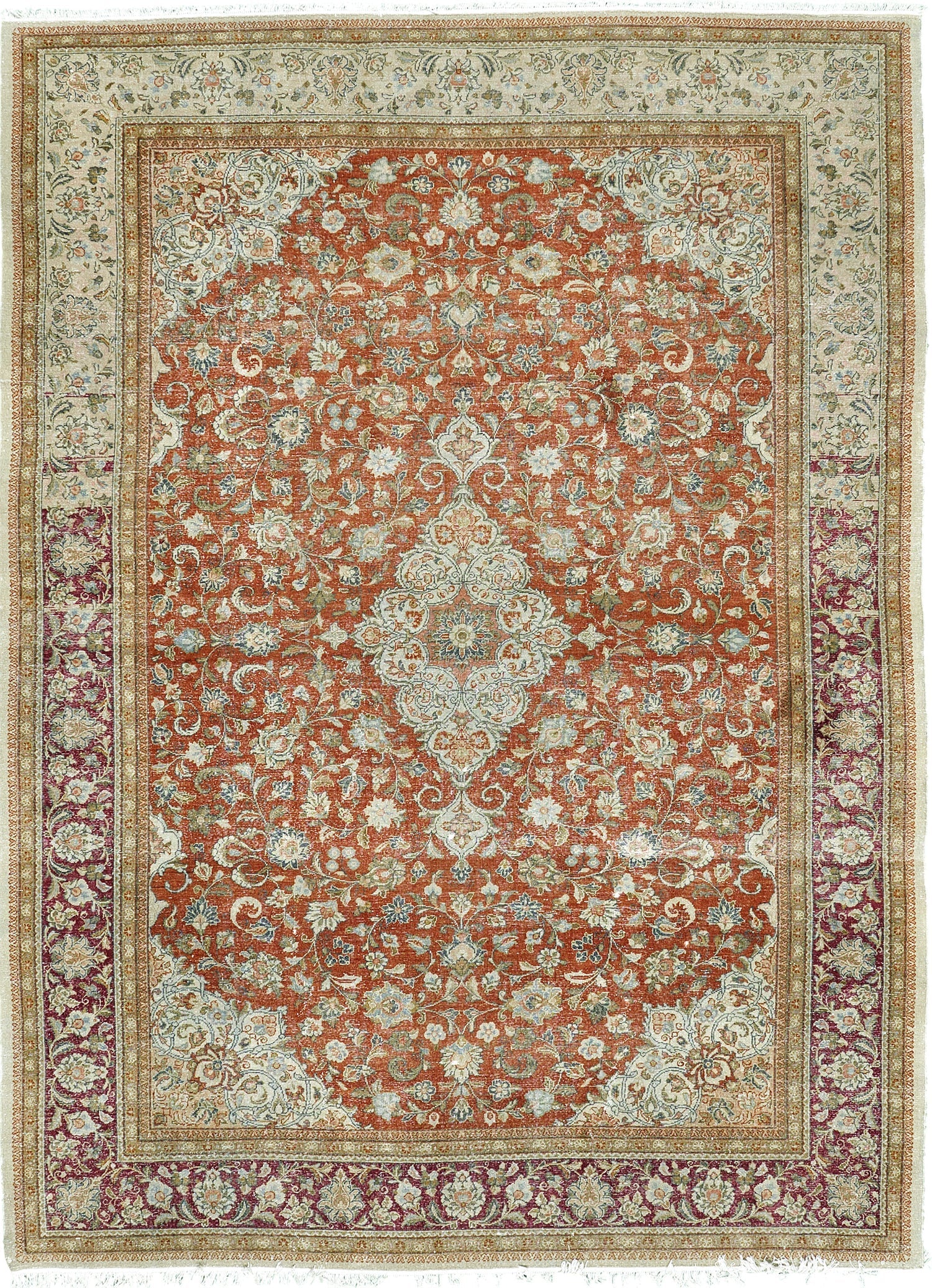
Fine Persian Rugs
Discover all our Persian Rugs
-
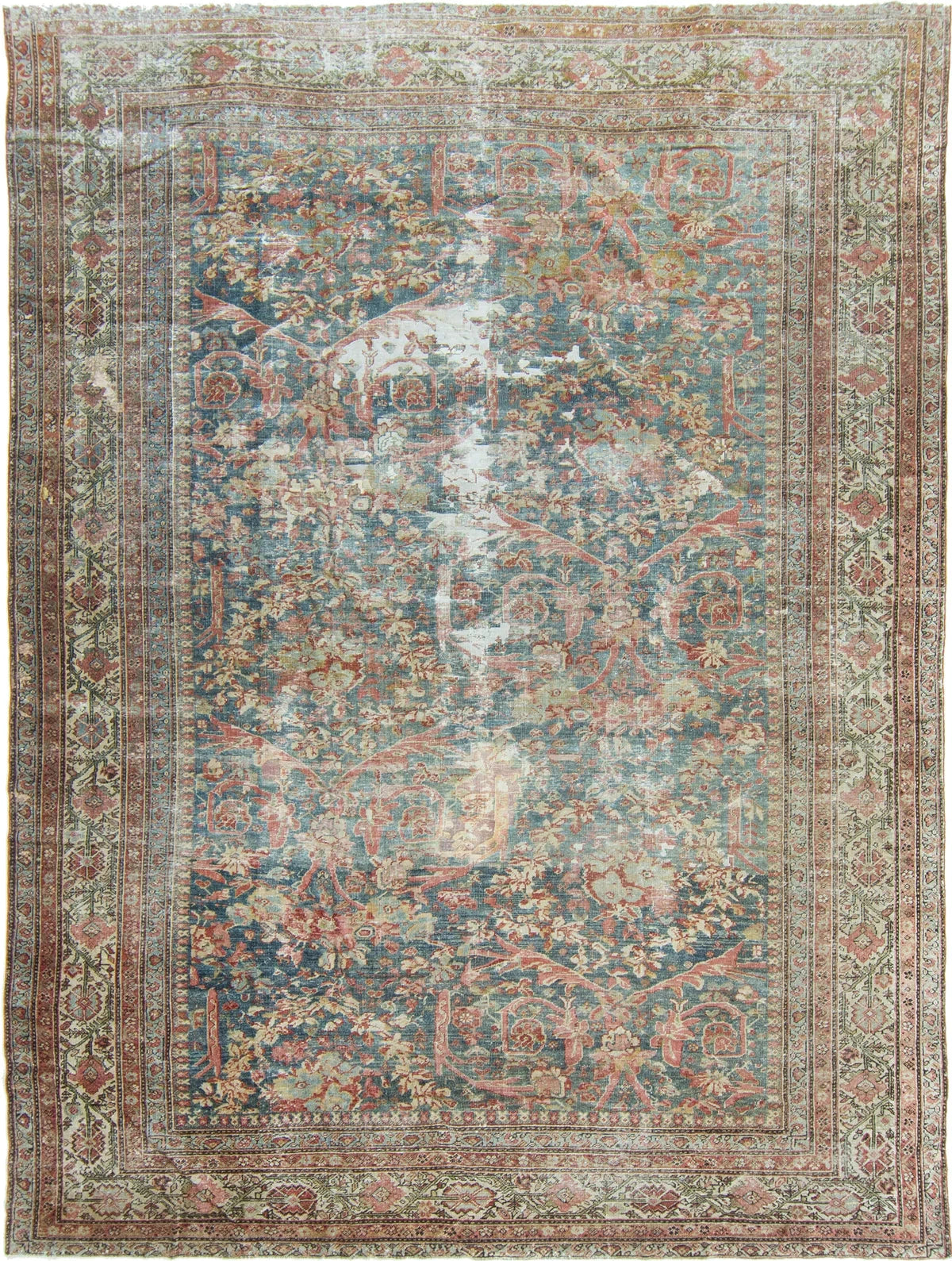
Distressed Persian Rugs
Distressed Persian Rugs — The Timeless Trend In The Interior Design World...
-
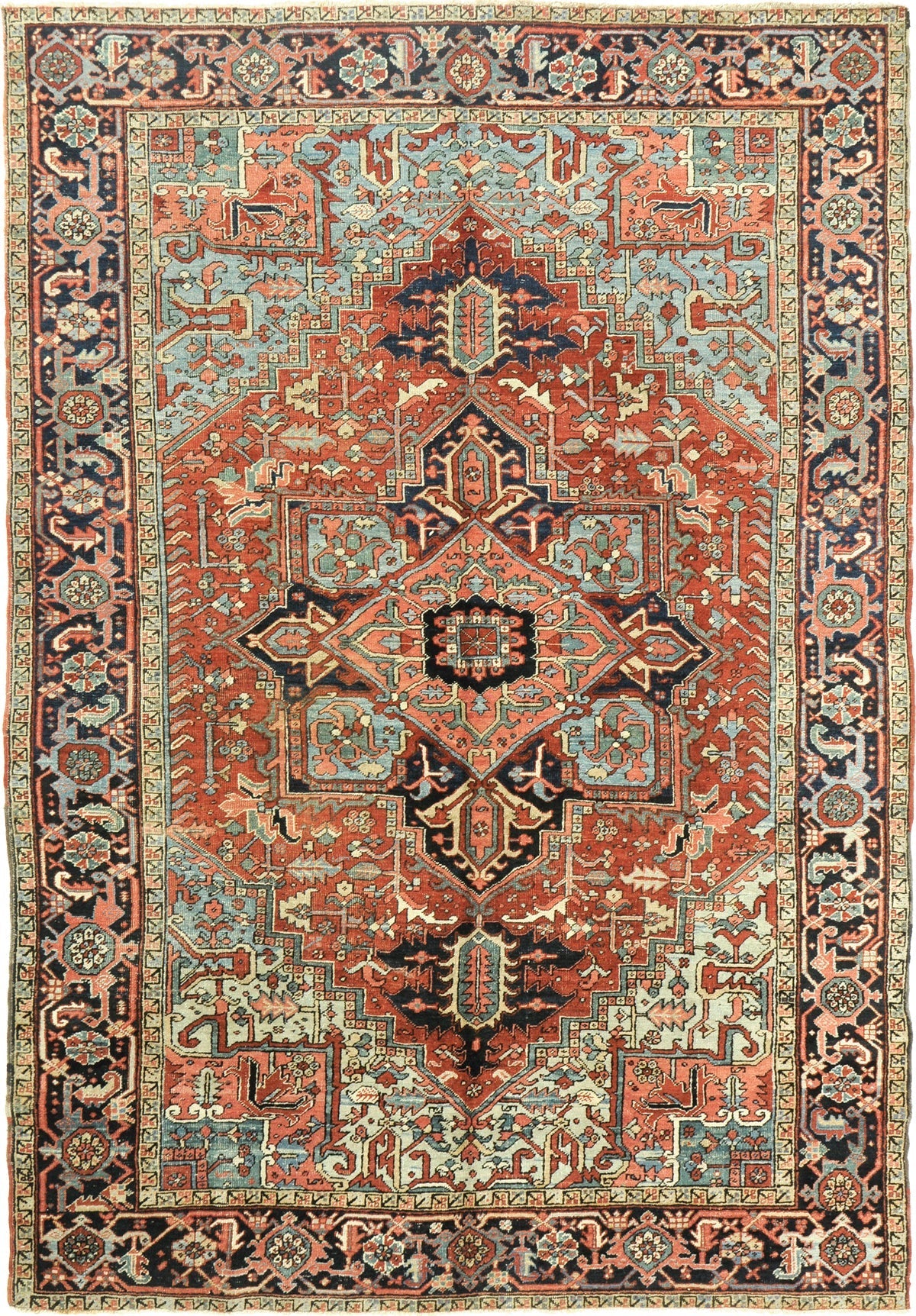
Heriz Rugs and Serapi Rugs
Heriz Rugs and Serapi Rugs: Their Origin and History Heriz rugs and...
-
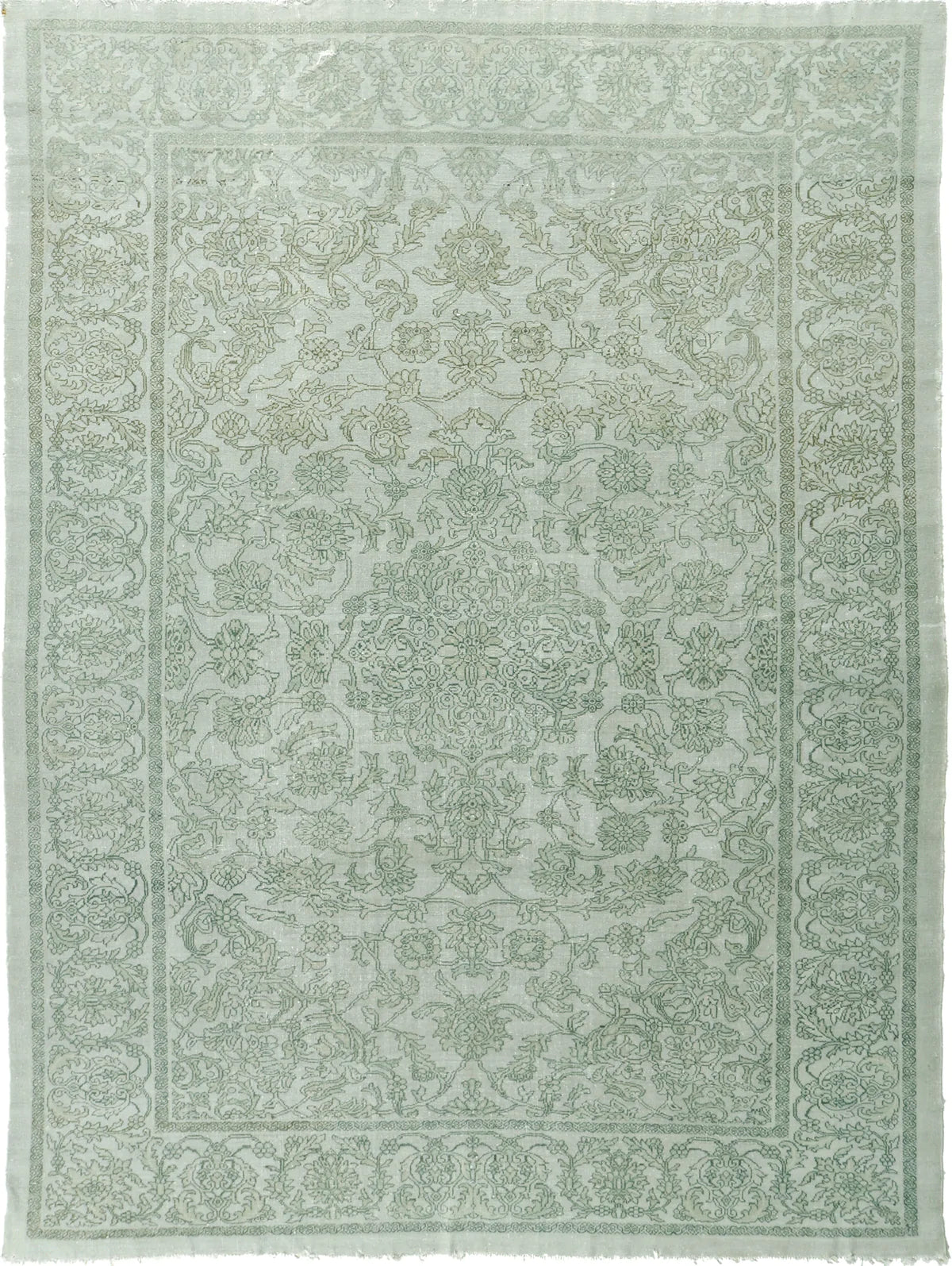
Green Persian Rugs
The History of Green Persian Rugs Green Persian rugs are prized for...



